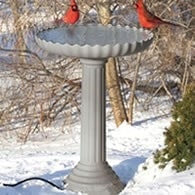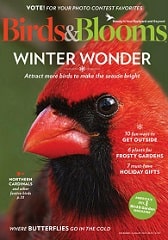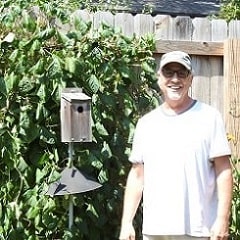Gray Catbird Habits
The Gray Catbird is in the family of Mimidae, which includes Mockingbirds and Thrashers.
These birds are renowned for their remarkable vocal abilities, often mimicking the sounds of other animals and bird species.
In-fact, a single 4 1/2-minute song of one male consisted of 170 distinct phrases.
Appearance: Size, Field Marks
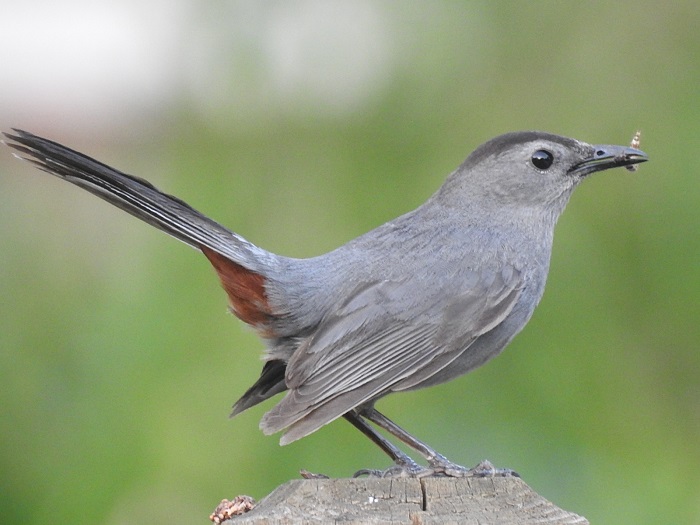
Ready to Feed Young at the Nest
About 8-9 inches in length, with a wingspan of around 11-13 inches. It has a slim and slightly elongated body.
As the name suggests, the bird is predominantly a slate gray color. This gray covers most of its body, including the head, back, and underparts.
It has a distinctive darker cap on the top of its head, which is usually black or dark gray.
The tail is also gray but features a subtle chestnut or rust-colored patch underneath, which can be seen when the bird is in flight or when it fans its tail.
The eyes are dark, and the bill is relatively long, thin, and black, well-suited for its diet of insects and fruits.
Why Catbirds Give the Meow Call
The mewing call is primarialy done by the male and serves as an alarm call, alerting others to the presence of potential predators or dangers in the vicinity.
While it's not an exact imitation of a cat, it effectively communicates the need for caution.
Females also call but their sounds are softer in tone.
Habitat Preference
These birds are commonly found in dense thickets, shrubs, and forest edges. Often found in residential areas.
They prefer habitats with a mix of open areas and dense vegetation, as this provides them with suitable foraging opportunities and protective cover.
Courtship Habits and Behaviors
Monogamous for the breeding season and if successful, may breed again in future seasons.
Pairs are usually bonded shortly after arriving at their breeding grounds in late March through April.
Their complex courtship behavior involves both vocalizations and physical displays.
During courtship, males will perch in a prominent location and sing a series of melodious songs to attract a mate.
These songs consist of various notes, phrases, and trills, and are often repeated in a pattern.
Watch the male when around a female as he raises his head up or down while fluffing out his body feathers to entice her to be his mate.
During the breeding season, the males will continually chase other males from their territory. Often they'll chase other species of birds away.
Once a pair bond is formed, nest building follows.
Nesting Habits
Adult Catbird Foraging on Berries
The breeding, egg laying, and nesting season begins in late April when they arrive at the breeding grounds and may extend into June, depending on their nesting location, whether it's farther South or North.
Females are the primary nest builders. The male will help with nest construction but usually adds very little.
The cup-shaped nest is made of twigs, leaves, grasses, and grapevine bark, lined with rootlets, and pine needles. The inner lining may include horsehair if available.
Most prefer to nest in shrubs, thick vine tangles, or small trees about 2 to 10 feet above the ground.
Eggs-Incubation-Broods
The eggs are a dark blue-green as the shown below in a nest. Females lay a clutch of 2 - 6 eggs.
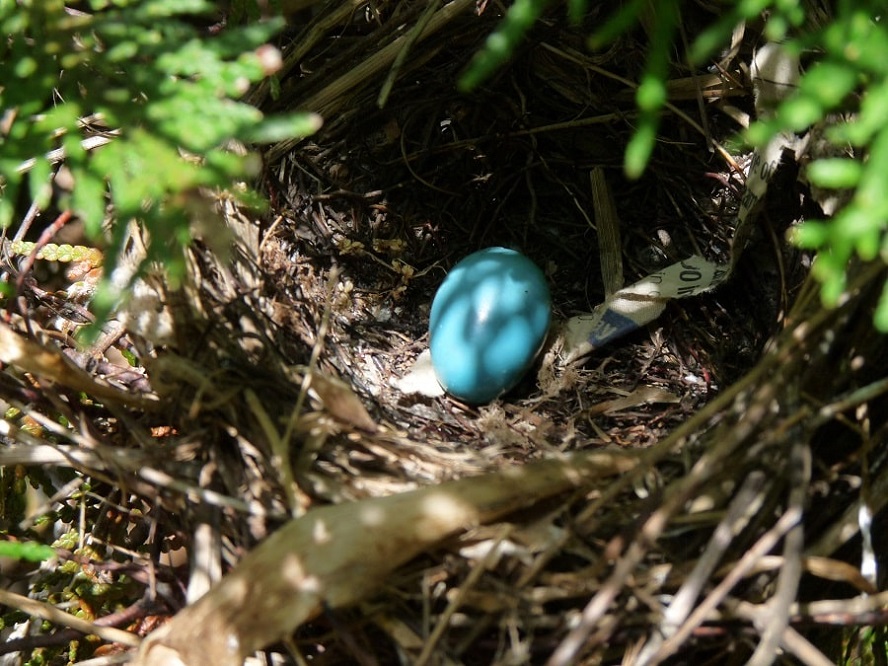
Nest and Egg
The female will sit on the eggs (incubate) for 12 to 15 days before they hatch. Females leave the eggs for short periods to feed.
The young will leave the nest within 10 to 13 days after hatching.
Both adult birds will continue to feed their young for 12 days after the young leave the nest. One to three broods may be raised each season.
| Nesting Timeline Stats | |
|---|---|
| Eggs | 2 - 6 |
| Incubation | 12 - 15 days |
| Nestling Phase | 10- 13 days |
| Broods | 1 - 3 |
They do not reuse the nest for second broods or in subsequent years.
During the nesting season they are occasionally targeted by the Brown-headed Cowbird, a brood parasite.
Female cowbirds lay their eggs in the nests of other bird species, including this species.
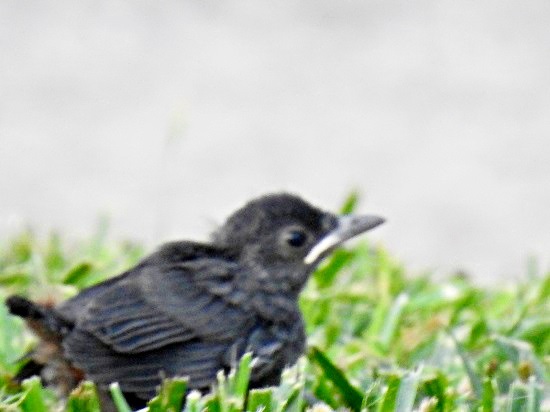
Fledgling Catbird on Lawn
If a cowbird egg is laid in a catbird nest, the catbirds will recognize it as foreign and reject or remove it from the nest.
Successful pairs often return to the same area year after year, while unsuccessful pairs abandon their territory.
What is Their Diet
Their diet consists of insects, spiders, and small fruits. Berries are a primary source of food.
As a matter of fact, berries make up as much as 50 percent of their diet.
These birds forage primarily on the ground and in low foliage but will also search in treetops.
If searching for food on the ground they will toss leaves and debris quickly, causing insects to scurry, and snatching them up before they get away.
Baby Catbird Chirps to be Fed
The way I encourage them to my fruit feeder is by providing grape jelly in our Oriole feeder trays. Check it out here: Fruit Feeder.
Migration
In late August - early September they begin their southward migration. They'll spend the winter in Mexico, Central America, and the Caribbean in late August - early September.
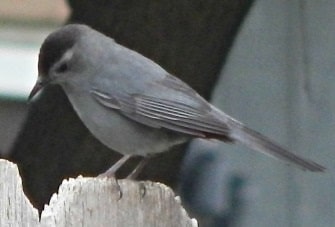
Gray Catbird Showing Black Cap
Small but increasing numbers remain in the North through the winter.
You'll most likely see them along the New England coast and on Southward.
If you see them in your backyard during winter, try placing suet, raisins, and blueberries out to keep them well-fed.
What is Their Lifespan
In the wild they'll have an average lifespan of 2 to 6 years in the wild, although some individuals may live up to 10 years.
Do They Have Predators?
Predators include domestic cats, snakes, raccoons, and birds of prey, like hawks and owls.
Their cryptic plumage and preference for dense vegetation provide some protection against these threats.
Are They Rare?
Population Trends: Species is stable to increasing in population in many regions. So, not a rare bird.
Their adaptability to various habitats and their ability to utilize backyard feeders have contributed to their success.
However, habitat loss and fragmentation remain potential threats to their long-term survival.
